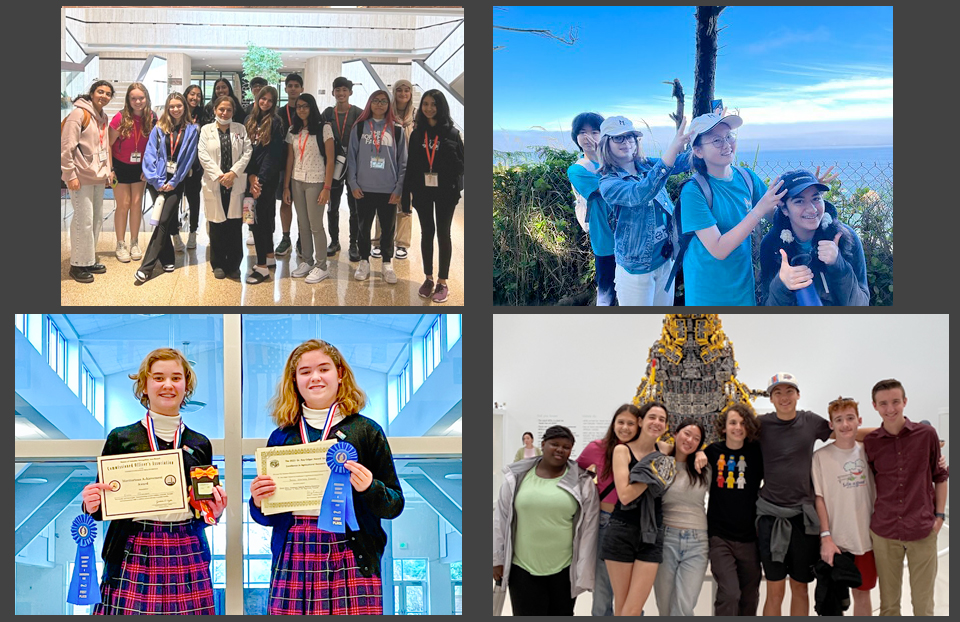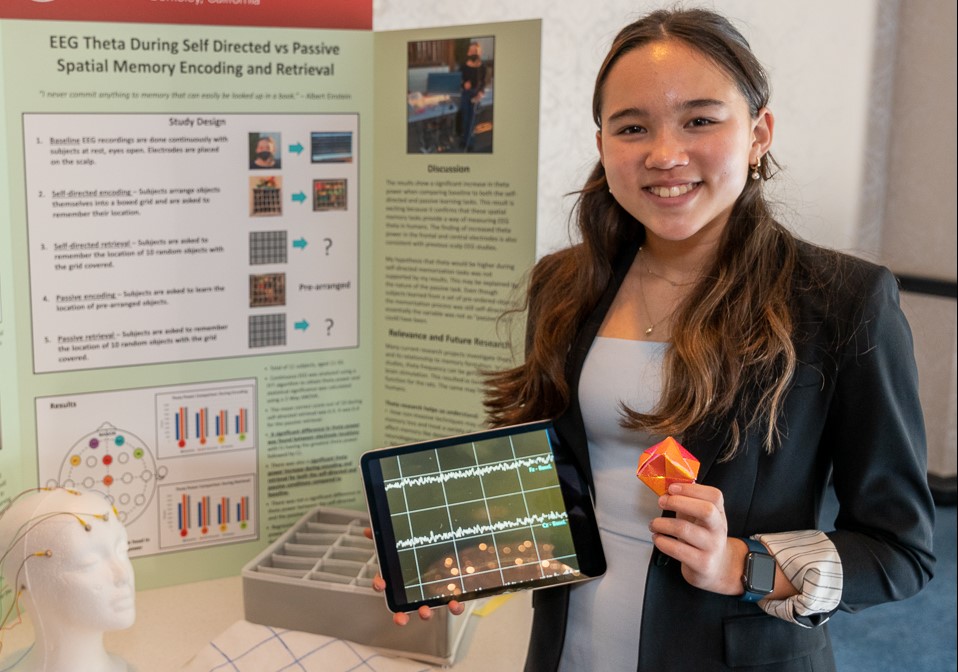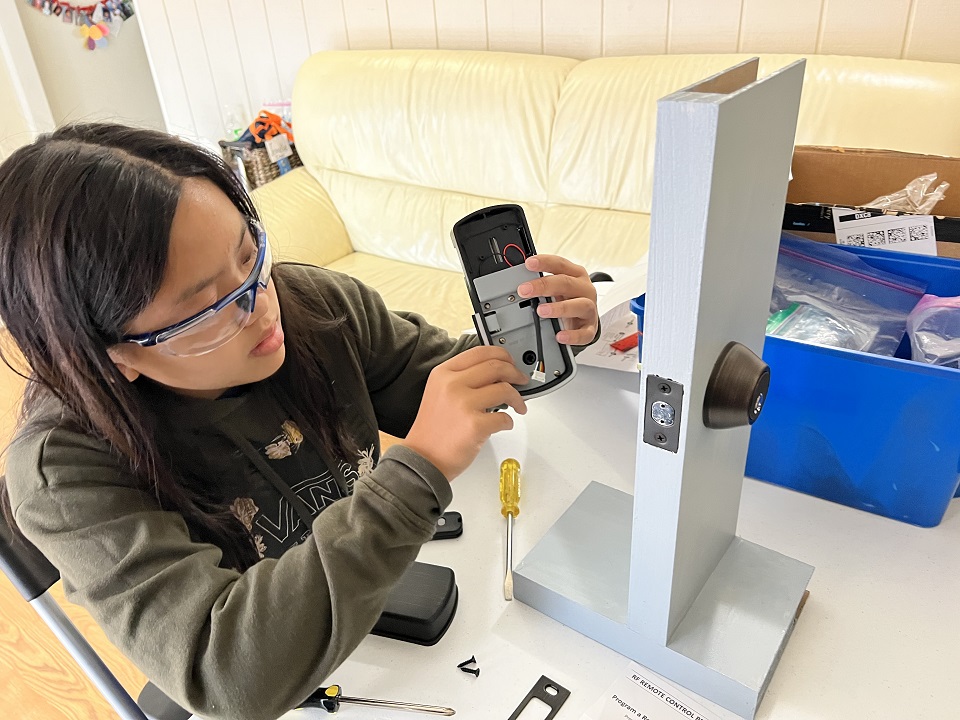Broadcom MASTERS, Broadcom MASTERS International
The beauty of science: solving problems, discovering marvels
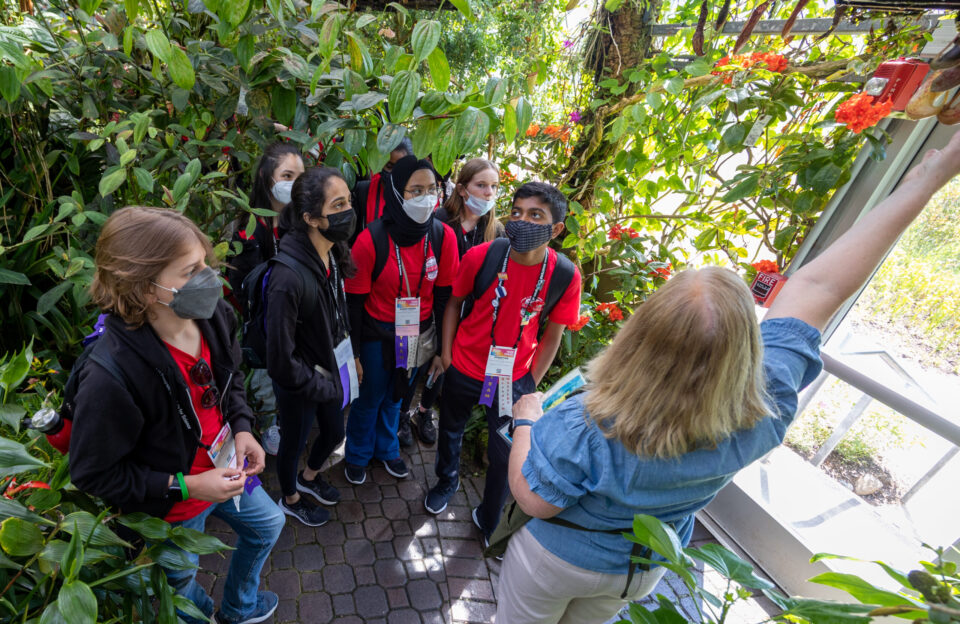
Written by Annika S. Hipple, Guest Blogger
On May 12, at the Omni Hotel at the CNN Center in downtown Atlanta, Georgia, 20 middle school students from around the world presented the projects that qualified them for the 2022 edition of Broadcom MASTERS International, a five-day experiential program for rising stars in math, applied science, technology and engineering.
The delegates came from 14 countries plus one territory, and their projects were equally diverse, ranging from botanical research to mathematics to paleontology to efforts to address specific social or medical problems.
Anushka Tonapi conducted an abstract project on the Heighway Dragon Fractal. “A fractal is an intricate geometric figure in which a similar figure repeats itself on an infinite scale,” explained Anushka, 13, from India. The Heighway Dragon Fractal is created by replicating and rotating line segments and attaching them to one another, forming triangles. Anushka varied the angles of the triangles and studied the impact on the fractal’s shape and patterns.
“Math is hard — you just have to accept it,” she said. “I think it’s beautiful once you get to know it and once you’ve crossed the obstacles that don’t let you see its beauty. And it’s applicable in the world — a lot of people use fractals in microchips and computers.”
Promoting health
Several delegates used technology to address health concerns. Talah Bakhsh, 13, from Saudi Arabia, created an app to help teenagers deal with mental health issues brought about by COVID-19 lockdowns. Keshvee Sekdha and Nyambura Sallinen, both 13 and from the United States, created an app that uses image classification, breath analysis and surveys of symptoms to detect lung cancer with 89.7% accuracy, useful for patients pondering whether to seek medical care and doctors considering whether to order follow-up tests.
Another US delegate, Judy Bai, 14, also focused on lung cancer, using a variety of databases to identify several genes associated with higher rates of COVID-related illness and mortality among lung cancer patients. “Those genes code for surfactant proteins, which bind the cell walls and make breathing easier,” Judy explained. “I found out that when lung cancer patients have a lower expressive number of surfactant genes, COVID can more easily invade the body and to wreak havoc.”
The mysterious brain
His-Hsueh Tsao, 14, from Taiwan, focused on a different part of the body: the brain. “I want to be a neurologist because the brain is still mysterious, and we can explore it and help people,” he said. “My project is about using brainwaves to control a small robotic car and to identify different people. We hope in the future we can use brainwaves to drive wheelchairs.”
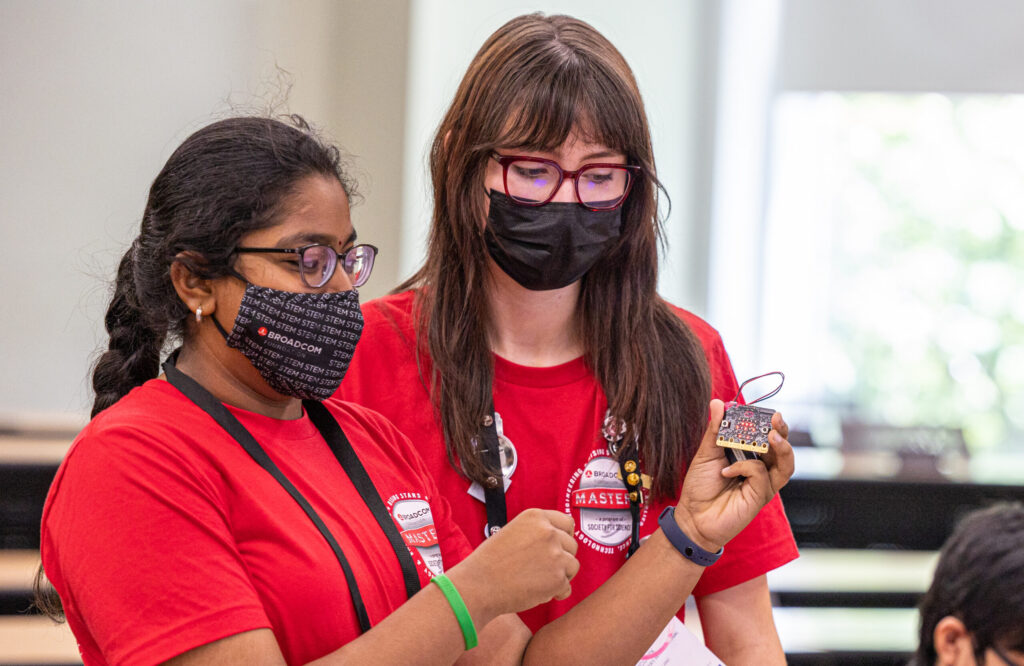
A different aspect of the brain was the focus for Ava McGurk, 14, who investigated whether color affects our perception of food taste. The delegate from Northern Ireland used various combinations of colors and flavors to determine whether people were able to correctly identify flavors without visual clues. “My goal was to establish if we can manipulate the brain to feel something that does not actually exist,” she explained. She discovered that when color and flavor were mismatched, people generally struggled with identification, but when external stimuli such as PowerPoint slides or soundtracks were introduced, flavor detection rates went up. “I think this could be beneficial in the treatment of diverse issues such as obesity, and I want to further develop my research for people suffering from Long COVID symptoms who still can’t taste,” Ava stated.
Science at home
Several delegates’ projects addressed specific problems they encounter in their personal lives. Raised around horses in Mexico, André Melgarejo Grave, 14, discovered that 95% of horses have an imbalance in their hooves that predisposes them to injury when they are shod with poorly fitting horseshoes. André developed a technique to improve fit by separating RGB images using an algorithm in the computer program MATLAB. By uploading a photo of the hoof of the horse into the app, the user can find the ideal measurements and shoe size for horses.
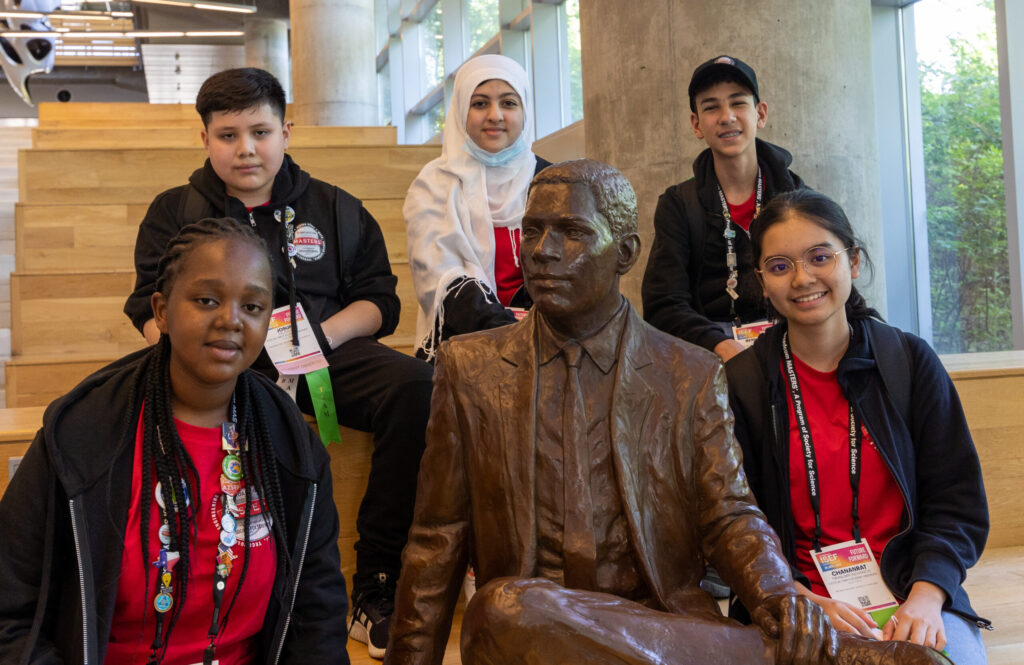
Lucy Chiwaka, 14, is from Zimbabwe, where electricity is often unavailable, causing her phone to run out of battery and affecting her ability to access Wi-Fi and complete homework assignments. “We’ll have hours, sometimes days, where electricity won’t come back,” she said. “It becomes a problem, so eventually I just had to think of something that would be self-reliant.” Lucy developed a phone that sends energy to a power bank while in use and can be recharged from the same power bank when needed.
South African delegate, Chaylin Myburgh, 14, is also very familiar with electrical outages. For her project, she sought to identify which material would most effectively conduct heat in a solar water heater. She compared four materials and determined that an aluminum can worked best, followed by a steel can, a glass jar and finally a silicone water bottle. Chaylin’s hope is that using recyclable materials “will assist people from lower incomes to use solar energy as an alternative and affordable way to heat water.”
Meanwhile, Chananrat Tiranumpongvanich, 14, known as Janja, took inspiration from her family’s rubber tree plantation in Thailand. Her family sells latex in solid form, while other farmers sell it in liquid form, which is more versatile and higher-priced. For her project, she tested different methods of preventing latex from solidifying prematurely by stopping the growth of bacteria and the resulting increase in pH that causes solidification.
Plants and perfumes
Quite a few delegates conducted projects related to plants. Marcellus McCalebb, 13, from the United States, infused radish plants with five different vitamins – B1, B2, B6, D1 and C – to see which would make them grow more quickly. He found that vitamin B6 resulted in the best outcome. “My hypothesis was that vitamin B6 was the best for these plants because it helps your heart and circulation; that might have helped the plants retain more water,” Marcellus explained.
Across the Atlantic, Grace Heffernan, 14, from Ireland, studied the effects of juglone, an allelopathic compound found in black walnut trees, on the growth of Japanese knotweed, a fast-growing invasive species. She distilled three different solutions with juglone and sprayed them on the different stands of knotweed. “The Japanese knotweed that I sprayed has not grown back yet, but there’s other Japanese knotweed in the district that has grown back, so my educated guess is that black walnut tree is inhibiting the growth of Japanese knotweed,” she summarized.
In Spain, Roque López Fernández, 14, researched perfumes and created his own using essential oils from native and invasive plants found in his home region of Galicia. “I didn’t just want to make perfumes,” he said. “I wanted to explain something about them, specifically the issue with invasive plants in the region, damaging the ecosystem.”
Creatures great and small
Bernardo Camargo, 13, from Brazil, has been interested in dinosaurs since childhood and hopes to eventually become a paleontologist. “Paleontologists use just fossils and bones to describe more about the history of our planet, and I think this is incredible,” he said. However, Bernardo also sees an enhanced role for modern technology. His project used 3D modeling and virtual reality as tools to study the distant past in a more accessible way.
A very different type of creature captured the attention of Czech delegate Jan Macel, 13, who became fascinated by the tiny water insect Gerris lacustris — also known as the common pond skater or common water strider — and the way it seems to skate across the surface of water. Jan studied the insect’s body structure, measuring the hairs on its six legs and comparing them to the legs of a cockroach. He found that the skaters were able to move effectively on water thanks to the high density of hairs on their legs.
Overall, the diversity and quality research represented in this year’s cohort of Broadcom MASTERS International delegates was both impressive and inspiring. The world will surely be hearing more from these talented young scientists, programmers, mathematicians and engineers in the future.
